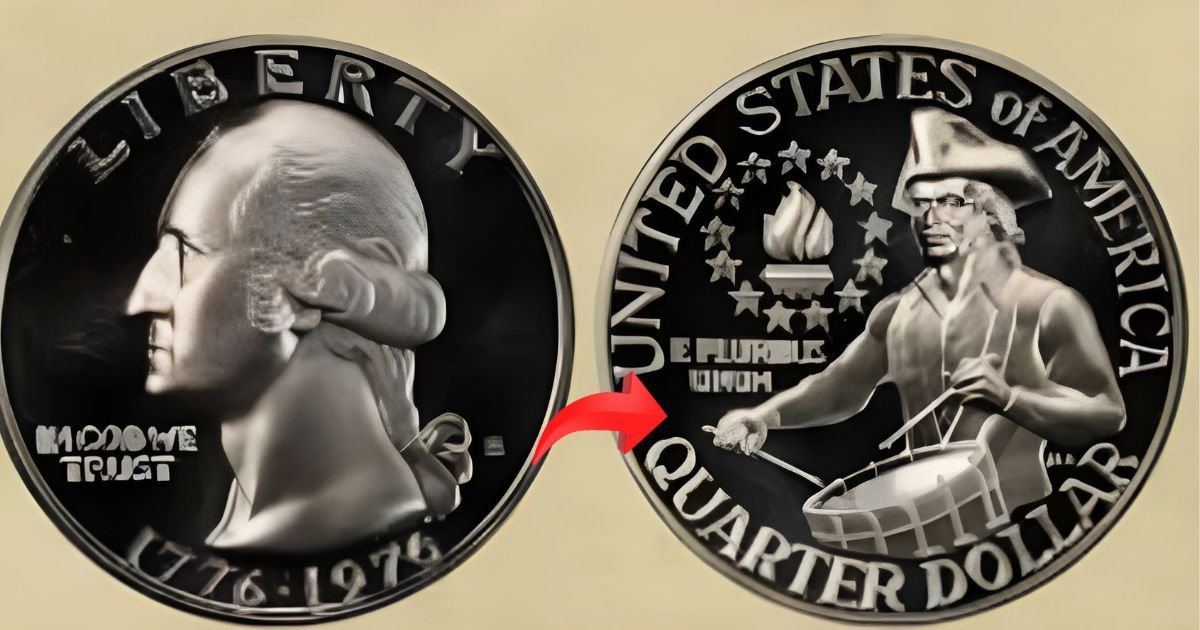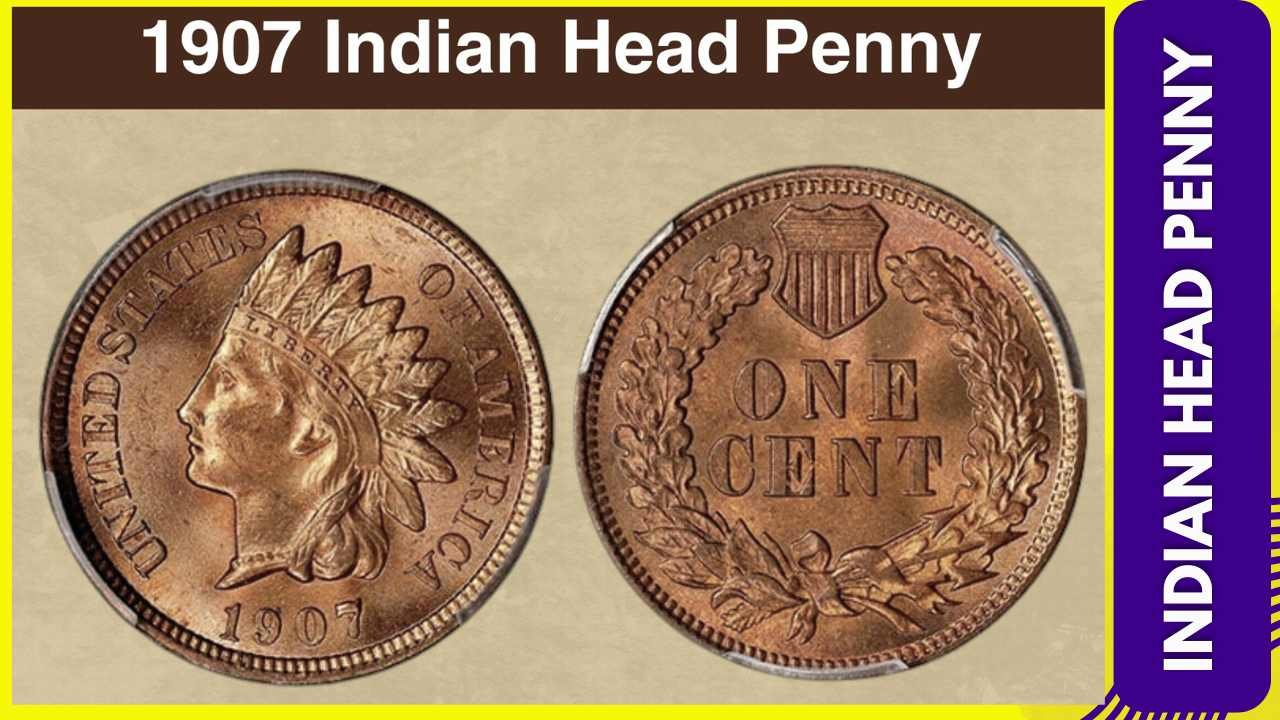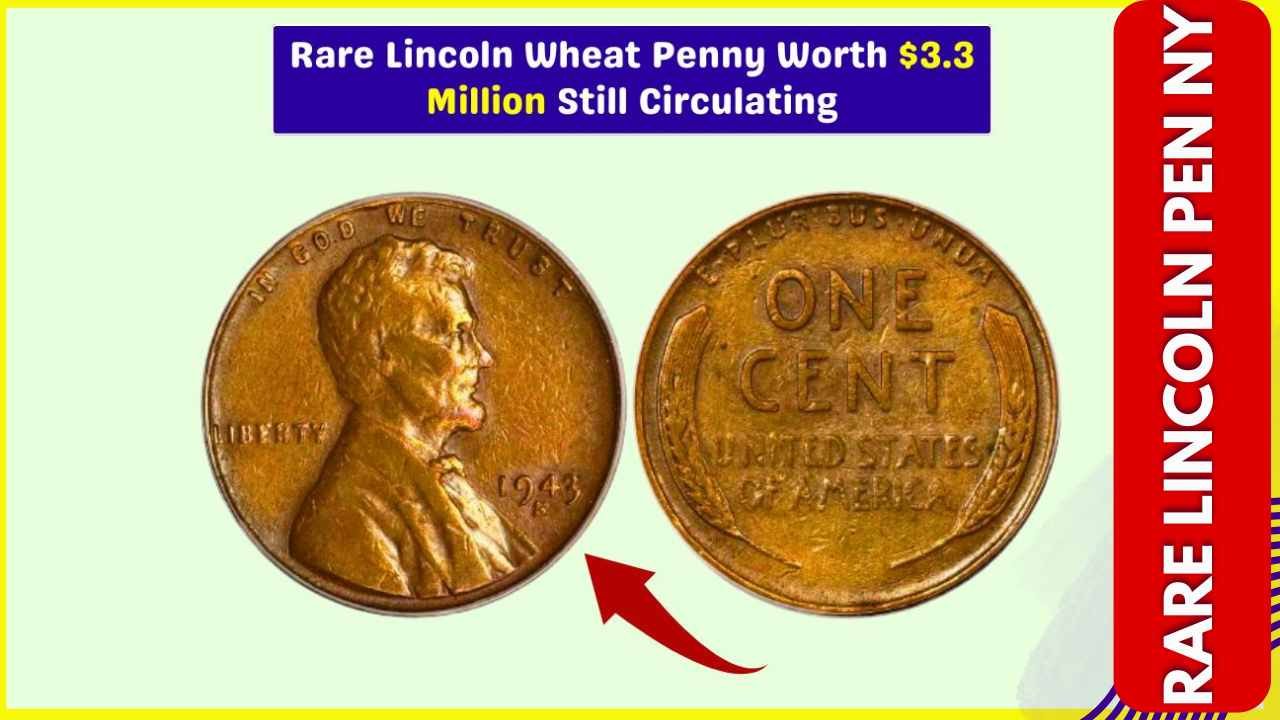Imagine discovering a rare coin worth a fortune among your everyday change. A Lincoln Wheat Penny, minted many years ago, could be hiding in your pocket or coin jar, waiting to be found.
Certain pennies from specific years or with unique minting errors can be valued at thousands or even hundreds of thousands of dollars. This is because some Lincoln Wheat Pennies, despite appearing ordinary, are highly prized by collectors.
While most pennies are worth only a few cents, rare varieties have sold for astronomical sums at auction. This article will guide you through identifying potentially valuable coins and what steps to take if you find one, making it an exciting journey into the world of coin collecting, which combines history, art, and the thrill of the hunt.
Table of Contents
The Valuable Lincoln Wheat Penny That Could Be in Your Pocket
You might be carrying a small fortune in your pocket without even realizing it. Lincoln Wheat Pennies, minted from 1909 to 1958, have become highly collectible items among numismatists and coin enthusiasts. What makes these coins particularly interesting is that certain years, mint marks, and errors can significantly increase their value.
The Lincoln Wheat Penny series is a treasure trove for collectors. These coins were produced for nearly five decades, resulting in a wide range of variations, some of which are extremely valuable. For instance, pennies from specific years or with particular mint marks can be worth far more than their face value. The value of these coins lies not just in their age but also in their condition and rarity.
There are numerous stories of people discovering valuable pennies in circulation. Some of these discoveries have been quite remarkable, with coins being valued at hundreds or even thousands of dollars. While finding a $710K penny is rare, it’s not impossible, as many valuable coins remain unidentified in general circulation. It’s also possible that pennies worth significant amounts are sitting in coin jars or piggy banks across America, waiting to be discovered.
Knowledge is key when it comes to identifying valuable coins in circulation. Understanding what makes a Lincoln Wheat Penny valuable can empower you to check your change more closely. Here are some factors that can increase the value of these coins:
- Certain years of mintage, such as 1909-S or 1914-D, are highly valued.
- Mint marks, or the lack thereof, can significantly impact a coin’s value.
- Errors, such as misprinted dates or misaligned dies, can make a coin rare.
- The condition of the coin, including its state of preservation and grading, plays a crucial role in its valuation.
To give you a better idea of the potential value of Lincoln Wheat Pennies, here’s a table highlighting some of the most valuable varieties:
| Year | Mint Mark | Condition | Value |
|---|---|---|---|
| 1909 | S | Good | $100-$500 |
| 1914 | D | Fine | $200-$1,000 |
| 1931 | S | Uncirculated | $1,000-$5,000 |
| 1943 | No Mint Mark | Error (Copper) | $10,000-$50,000 |
As you can see, the value of Lincoln Wheat Pennies can vary greatly depending on several factors. Whether you’re a seasoned collector or just someone who enjoys checking their change, understanding the potential value of these coins can be both fun and rewarding.
What Makes the Lincoln Wheat Penny Special?
The Lincoln Wheat Penny is more than just a coin; it’s a piece of American history.
Introduced in 1909, it was the first U.S. coin to feature Abraham Lincoln, marking a significant shift in the country’s numismatic history. Its design, by Victor David Brenner, features Lincoln’s profile on one side and wheat stalks on the reverse.
This wheat penny was minted for 50 years, making it accessible and highly sought after by collectors. The Lincoln Wheat Penny remains a significant coin, not just for its historical value, but also for its sentimental worth.
The History of Lincoln Wheat Pennies
Introduced in 1909, the Lincoln Wheat Penny was a commemorative coin marking the 100th anniversary of Abraham Lincoln’s birth. The coin’s design was created by Victor David Brenner, who crafted the iconic portrait of Lincoln still used on pennies today.
The initial pennies featured Brenner’s initials (VDB) on the reverse side, which sparked controversy and led to their removal. However, the VDB initials were later reintroduced on the 1918 pennies.
The wheat design on the reverse side represented America’s agricultural abundance and prosperity. The composition of the penny changed during World War II, as copper was needed for the war effort.
| Year | Event | Significance |
|---|---|---|
| 1909 | Introduction of Lincoln Wheat Penny | Commemorated 100th anniversary of Lincoln’s birth |
| 1918 | Reintroduction of VDB initials | Recognized designer’s work |
| 1942-1944 | Change in penny composition | Copper conservation for war effort |
| 1959 | Replacement with Lincoln Memorial design | Marked nearly 50 years of wheat design |
The Lincoln Wheat Penny was minted for nearly 50 years, creating a rich history and several rare varieties.
The Lincoln Wheat Penny Worth $710K Still in Circulation?
Could a Lincoln Wheat Penny in your pocket be worth a small fortune, potentially up to $710,000? The Lincoln Wheat Penny series has a rare variety that could be worth this staggering amount.
Rarity and Value
The 1943 copper penny is one such rare variety, highly valued for its historical significance and rarity. This penny was minted during World War II, when copper was in short supply, making it a unique error coin.
- The 1943 copper penny is highly prized among collectors due to its rarity and the story behind its creation.
- Some of these extremely valuable pennies may still be in circulation, as evidenced by recent discoveries.
Experts believe that while most rare pennies have been discovered and removed from circulation, some may still be out there. The odds of finding such a coin are low, but it’s not impossible, making the hunt exciting.
Most Valuable Lincoln Wheat Penny Varieties
The Lincoln Wheat Penny series contains several rare and valuable coins highly sought after by collectors. These coins are valued for various reasons, including their historical significance, low mintage numbers, and production errors.
One of the most famous and valuable Lincoln Wheat Pennies is the 1909-S VDB, which can be worth thousands of dollars even in good condition. Other notable varieties include the 1914-D and 1931-S penny, which are valuable due to their low mintage.
- The 1922 “No D” wheat penny is another valuable variety, made so by a production error where the Denver mint mark was missing.
- Even common date wheat pennies can be worth more than their face value if they are in uncirculated condition.
- The condition of a Lincoln Wheat Penny dramatically affects its value, with mint state coins commanding much higher prices.
Thus, collectors and enthusiasts should be aware of the condition and rarity of their coins to understand their potential penny valuable worth.
The 1909-S VDB: A Collector’s Dream
The 1909-S VDB penny, minted in San Francisco, is one of the rarest Lincoln Wheat Pennies. Only 484,000 were produced, making it highly sought after by collectors.
The coin’s designer, Victor David Brenner, placed his initials (VDB) on the reverse side between the wheat stalks, which became a point of controversy. This led to the removal of the initials shortly after production began, adding to the coin’s rarity and allure.
- To identify this valuable coin, look for the “S” mint mark below the date and the VDB initials on the reverse side.
- The value of the 1909-S VDB penny varies greatly depending on condition, ranging from hundreds to tens of thousands of dollars.
- Notable discoveries and auction results have contributed to its iconic status among collectors.
Beyond its monetary value, the 1909-S VDB penny is an iconic collector’s item due to its historical significance and the story behind its creation.
The 1943 Copper Penny: A Wartime Error Worth a Fortune
The 1943 Copper Penny is a numismatic anomaly that has captured the imagination of collectors worldwide. During World War II, the U.S. Mint switched from copper to zinc-coated steel for pennies to conserve copper for the war effort.
A few copper planchets accidentally made it into production, creating the extremely rare 1943 copper penny, a highly prized Lincoln Wheat Penny. Only about 20-40 authentic examples are known to exist, making them extremely rare valuable.
The condition of these rare pennies significantly impacts their penny worth, with uncirculated examples commanding the highest prices. At auction, they have sold for hundreds of thousands of dollars, with the finest examples reaching over $1 million.
To distinguish a genuine 1943 copper penny from fake ones, collectors use the magnet test, as copper is not magnetic. Be cautious of altered 1948 pennies that scammers try to pass off as 1943 copper cents.
- The 1943 Copper Penny is a rare wheat penny.
- Its value lies in its rarity and condition.
- It’s a part of the Lincoln Wheat series, highly valued by collectors.
Other Rare Lincoln Wheat Pennies to Look For
The world of Lincoln Wheat Pennies is vast, with several rare and valuable coins beyond the well-known 1909-S VDB and 1943 copper pennies. Collectors often look for specific dates and mint marks to add to their collections.
One such rare penny is the 1914-D Lincoln Wheat Penny, which was produced in limited quantities, with only 1.2 million minted. The low mintage makes this penny particularly valuable among collectors. Another valuable variety is the 1922 “No D” penny, created when the Denver mint mark was accidentally omitted during production.
The 1931-S Lincoln Wheat Penny is also highly sought after due to its limited production during the Great Depression. Additionally, doubled die errors, such as the 1955 doubled die penny, can be quite valuable. This particular penny shows visible doubling in the date and lettering, making it a prized find for collectors.
To identify these rare varieties, collectors should check the date, mint mark, and specific error features. Even common date wheat pennies with striking errors can be valuable. Knowledge of these varieties helps collectors identify potentially valuable coins that others might overlook.
| Rare Lincoln Wheat Penny | Reason for Value | Approximate Value |
|---|---|---|
| 1914-D | Low mintage (1.2 million) | $200-$500 |
| 1922 “No D” | Omission of Denver mint mark | $500-$1,000 |
| 1931-S | Limited production during the Great Depression | $100-$300 |
| 1955 Doubled Die | Visible doubling in date and lettering | $1,000-$2,000 |
How to Identify a Valuable Lincoln Wheat Penny
The process of identifying a valuable Lincoln Wheat Penny involves several key steps that any collector can follow.
First, check the date and mint mark, as these are primary indicators of a coin’s potential value. The date can tell you if it’s from a rare year, and the mint mark can indicate if it was produced at a specific mint that had lower production numbers.
- Examine the condition of the penny, as better-preserved examples are worth significantly more.
- Look for errors like doubled dies, off-center strikes, or repunched mint marks, which can add substantial value.
- Use a magnifying glass to spot subtle details that might indicate a valuable variety.
It’s also crucial to distinguish genuine rare pennies from altered or counterfeit examples. Utilize resources like coin reference books, websites, and apps to help with identification.
Handling coins properly is vital to preserve their condition and potential value. If you suspect you’ve found a rare Lincoln Wheat Penny, consider seeking professional grading to confirm its authenticity and value.
Where These Rare Coins Might Be Hiding
Rare Lincoln Wheat Pennies could be hiding in everyday objects. You can find them in old piggy banks or jars that have been untouched for decades.
Checking inherited collections or asking older relatives about their saved coins can be fruitful. Even bank rolls of pennies occasionally contain a wheat penny.
- Estate sales, garage sales, and flea markets are potential sources.
- Some businesses, especially in rural areas, might still have old coins.
Patience and persistence are key when searching for these rare coins.
What to Do If You Think You’ve Found a Rare Penny
When you think you’ve found a valuable Lincoln Wheat Penny, the first thing to do is handle it carefully to avoid damage. Hold the coin by the edges to prevent oils from your skin from coming into contact with the surface.
It’s also crucial not to clean the coin, as this can significantly reduce its value. Instead, store it in a protective holder to prevent damage while you research its potential value.
- Consult reference materials or coin collector guides to make a preliminary identification of your coin.
- Consider having your coin authenticated by a professional grading service like PCGS or NGC to verify its authenticity and condition.
If your coin is deemed valuable, you have several options for selling it, including coin dealers, auctions, and private sales. Weigh the pros and cons of keeping the coin as an investment versus selling it immediately.
| Option | Description | Considerations |
|---|---|---|
| Coin Dealers | Experienced professionals who can offer a fair price for your coin. | Research the dealer’s reputation and ensure they are a member of a reputable organization. |
| Auctions | Can potentially yield a higher price due to competitive bidding. | Understand the fees associated with auction houses and the potential for reserve prices. |
| Private Sales | Allows you to negotiate directly with the buyer. | Be cautious of scams and ensure you have a clear, legally binding agreement. |
Regardless of the path you choose, be aware of potential scams when seeking appraisals or selling rare coins. Even if your find isn’t worth thousands, it might still have collector value above its face value.
Why You Shouldn’t Clean Your Old Coins
Cleaning your old coins can strip away their natural patina and significantly reduce their worth. Many collectors seek coins that have aged naturally, retaining their original surfaces. Wheat pennies, in particular, are highly valued for their condition and rarity.
When you attempt to clean old coins, you risk removing the natural toning that develops over decades. This toning is not just a layer of dirt; it’s a desirable characteristic that adds to a coin’s value. Even gentle cleaning methods can cause microscopic scratches that professional graders can detect, further devaluing your coin.
There are numerous examples of coins that lost substantial value due to well-meaning but misguided cleaning attempts. People often confuse the natural patina with dirt, not realizing that the toning is a significant aspect of a coin’s appeal to collectors.
- Cleaning removes the natural patina that collectors value.
- Even gentle methods can cause microscopic scratches detectable by professional graders.
- Coins pulled from piggy banks or coin jars should be handled minimally to preserve their condition.
To preserve your coins, it’s recommended to store them properly. Using protective cases or albums can help maintain their condition. It’s also worth noting that professional conservators can sometimes safely treat damaged coins, but this is rarely necessary.
| Storage Method | Description | Benefit |
|---|---|---|
| Protective Cases | Individual cases that encase each coin. | Prevents scratches and damage. |
| Coin Albums | Albums with pages designed to hold coins. | Organizes coins while protecting them. |
| Coin Folders | Folders with slots for coins. | EASY storage and viewing. |
Even coins found in banks or in people’s collections might be holding significant value. Therefore, it’s crucial to handle them with care and consider having them appraised by a professional.
Recent Auction Records for Rare Lincoln Wheat Pennies
Rare Lincoln Wheat Pennies have fetched astonishing prices at auctions, captivating collectors and investors alike. The condition of these pennies significantly affects their worth, with high-grade examples commanding thousands.
Recent auction results highlight the investment potential of these coins. For instance, high-grade 1909-S VDB pennies have sold for record prices.
| Coin Type | Grade | Price |
|---|---|---|
| 1909-S VDB | MS67 | $120,000 |
| 1943 Copper Penny | MS64 | $200,000 |
| 1914-D Lincoln Wheat Penny | MS65 | $80,000 |
The authentication and grading by services like PCGS or NGC play a crucial role in determining auction prices. Provenance also adds value to these rare coins.
Conclusion: Keep Checking Your Change
With the knowledge gained from this article, you’re now equipped to spot a valuable Lincoln Wheat Penny. The 1909-S VDB and 1943 copper penny are among the most valuable varieties to watch for. While finding a $710K penny is unlikely, it’s not impossible, as valuable coins still turn up in circulation. Check your coin jars, old collections, and daily change for these potentially valuable treasures.
Read Also :- Bicentennial Quarter Valued at $11 Million: A Rare Find














